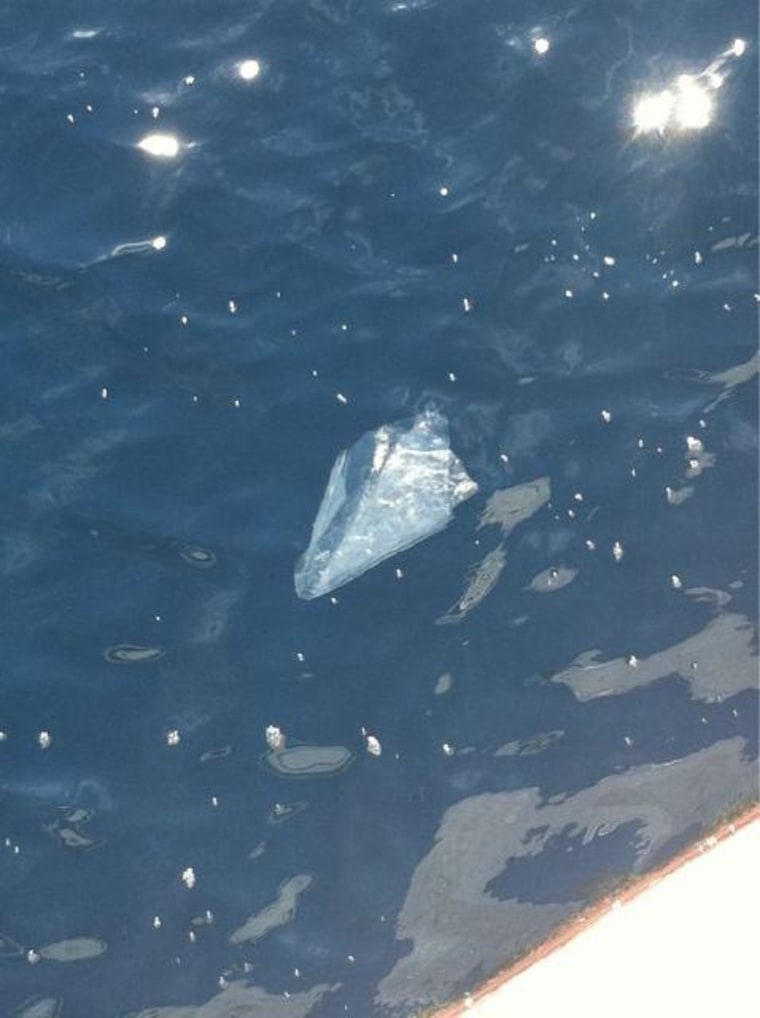When oceanographer David Gallo stepped out onto his ship, floating above the resting place of the RMS Titanic, he spotted evidence of a different kind of tragedy — a lone plastic bag floating in the water.
"I walked out on the deck to appreciate a calm blue sea and there it was," said Gallo, of the Woods Hole Oceanographic Institution (WHOI) in Massachusetts. "It was totally unexpected and it had a profound impact on those of us on deck."
The WHOI is currently conducting a comprehensive survey, co-led by Gallo, of the Titanic site, along with the company that owns the salvaging rites to the site. WHOI scientists first discovered the Titanic's final resting place nearly 25 years ago.
The plastic bag is another example of how man's trash is lurking across the oceans and even floating near invaluable historical sites, such as the site of the , 370 miles southeast of Newfoundland, Canada.
"We look at Titanic as the greatest disaster at sea, but the Titanic was a single tragic event. What we are doing to the sea on an everyday basis is one of the great untold tragedies," Gallo told OurAmazingPlanet.
Garbage patches
Ships towing long nets have found plastic pieces floating across hundreds of miles of the North Atlantic during the past 22 years. On the other side of the world, in the middle of the Pacific Ocean, lies the "Great Pacific Garbage Patch," an area of open sea hundreds of miles across littered with floating bits of plastic debris.
Boat expeditions to the seas around Antarctica in 2008 even found pieces of plastic floating around in the remote waters. The plastic that ends up in these floating dumps comes from many sources: ships at sea, polluted coastal towns and land-based garbage dumps.
The plastic bag floating near the Titanic probably floated to its location on the Gulf Stream, the strong, warm-water current that flows northward along the U.S. East Coast, Gallo said. It might have started its journey anywhere on the East Coast of the United States or beyond.
Plastic pollution
In garbage patches, the plastic pieces are hemmed in by circular ocean currents and mostly float near the surface of the water. Sea birds are known to swallow small plastic pieces, because they look like fish eggs, according to the Environmental Protection Agency, and sea turtles sometimes swallow clear plastic bags that resemble jellyfish.
Over time, however, the ocean water breaks down the plastic into microscopic particles that act like sponges for pollutants such as polychlorinated biphenyls, or PCBs.
Any tiny ocean animals, such as worms, unlucky enough to swallow the plastic particles will pass them up the food chain as they in turn are eaten by larger creatures. The plastic just accumulates inside their bodies.
Near Antarctica, another worry is that those bits of plastic could harbor microbes or other life that isn't native to the southernmost continent and its environs. These hitchhikers could establish themselves on the continent or the islands around it and potentially become invasive species, pushing out natives.
"We are slowly turning the oceans into a chemical soup, and plastics are a big part of that," Gallo said. "In effect it's almost as though we are waging war against life in the sea — and if we kill the sea, we kill ourselves. It's that simple."
